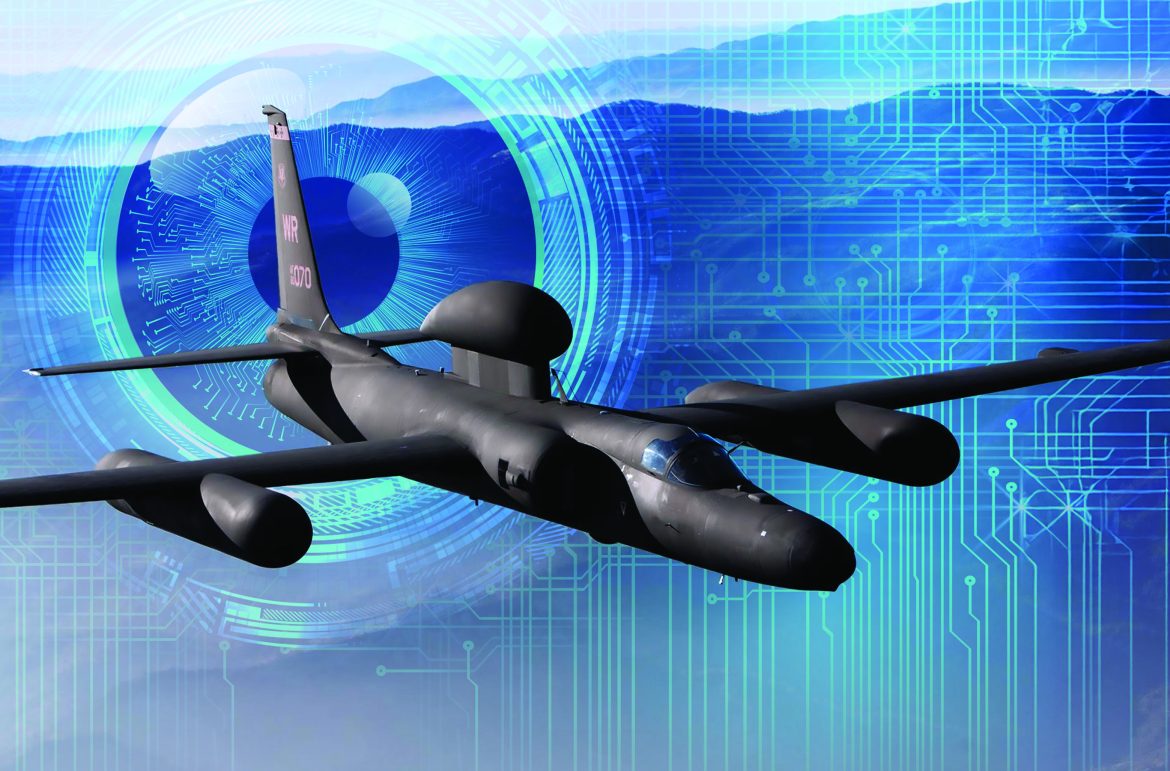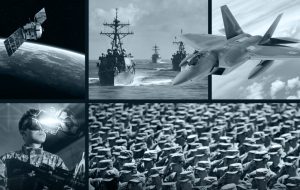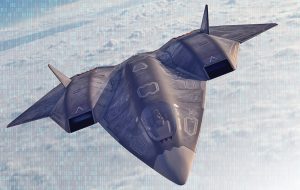The primary mission of aerial intelligence is to provide operationally valuable information to advance units in the field. This encompasses geographic, physical, human, and political data, and includes specific measures for gathering updated intelligence on enemy movements, positions, and intentions. Aerial intelligence relies on two key advantages: The ability to penetrate deep into enemy territory from heights unreachable by hostile forces and methods that evade enemy detection and interference.

Moreover, given that the air force is the most targeted branch in modern warfare—due to its decisive role—camouflage is an essential function of aerial intelligence.
This includes traditional concealment methods, such as hiding aircraft on the ground or in flight, and modern techniques like radar jamming and communication disruption.
A closer look at aerial intelligence history highlights two constants in this field: altitude and speed. Altitude provides an expansive view for surveillance, while speed enables rapid information gathering, transmission, and processing, essential for timely decision-making. These priorities underscore the intelligence efforts to overcome barriers to high-altitude monitoring and to limit the enemy’s capabilities in these areas.
In today’s rapidly evolving battlefields, air forces, like other military branches, must adapt to the unique demands of modern warfare. This involves integrating all capabilities to meet targeted objectives, with aerial intelligence playing a central role in countering air-based threats in peace and active operations.
In this context, one question arises: is aerial intelligence reshaping its priorities, and if so, how? This study aims to answer that question in the following sections.
Restructuring Intelligence, Surveillance, and Reconnaissance (ISR) Priorities for Major Powers
A 2018 Congressional Research Service study, titled “Designing ISR Systems for Great Power Competition,” revealed that the US Air Force’s ISR capabilities previously focused on counterterrorism and counterinsurgency.
However, a shift began in 2018 towards a new array of aerial capabilities designed to address geostrategic rivals. Thus, the US Air Force decided to reallocate investments from counterterrorism-focused intelligence to systems better suited for grey-zone operations—between peace and war—and in highly competitive geopolitical environments.
This shift supports the Air Force’s goal of maintaining a comprehensive situational awareness in targeted, high-stakes operational theatres.
The following graph illustrates the restructured ISR priorities projected for completion by 2028:
Key Challenges Prompting the Reassessment of Aerial Intelligence Priorities
1. Reduced Response Time and Expanding Scope of Operations
The increased instability within a multipolar world heightens the demand for aerial intelligence, significantly broadening its operational scope.
This expansion requires monitoring current crisis zones and involves pre-emptive surveillance of potential hotspots, detecting emerging threats, and understanding the intentions of complex strategic competitors.
With the triad of “competition, conflict, and confrontation” increasingly shaping international relations, aerial intelligence must adapt to continually assess the real capabilities and intentions of each current and potential rival, especially in light of rapid advancements in deceptive tactics and stealth technologies.
The resurgence of high-intensity conflicts worldwide also necessitates a redefined and expanded intelligence ecosystem. For instance, the ongoing conflict in Ukraine has intensified Europe’s need to rapidly develop aerial intelligence capacities from the strategic to the tactical levels.
For an intelligence cycle to be effective, it relies on the rapid and efficient execution of a four-stage process: Observe, Orient, Decide, and Act, known as the OODA loop. This concept, introduced by Colonel John Boyd of the US Air Force—who served in three wars over a 24-year career—remains foundational, particularly as response times shorten and the need for quick, accurate action intensifies.
In today’s high-intensity conflicts, rival factions often target the OODA loop of their adversaries, seeking to disrupt any or all of its stages (observation, orientation, decision-making, and action). For air intelligence to succeed, it must operate at a pace faster than that of its adversaries.
2. Data Overload and the Shift from “Cognitive Drain to Cognitive Awareness”
Due to the massive increase in data, air intelligence is rethinking how to process, exploit, analyse, and disseminate intelligence. On the other hand, connecting multiple intelligence platforms and sensors to pilots for near-real-time intelligence gathering is essential.
For example, in 2013, the U.S. Air Force’s Intelligence, Surveillance, and Reconnaissance Division (known as Air Force Squadron 25) processed 20 terabytes of data daily, analysing 460,000 hours of video and publishing 2.6 million images.
To address the cognitive challenge posed by the surge in data from the global strategic environment, the US Air Force established the 16th Air Force (16 AF) and Air Forces Cyber.
These shifts aim to modernise the Air Force with a new approach to warfare, often described as moving “from attrition to awareness.”
Thus, many air intelligence operations now employ programs like C-Cube, which compiles and processes vast amounts of data, thanks to artificial intelligence (AI) and cloud computing technology. This promising program automatically classifies objects, detects changes, and analyses operational environments, leveraging its significant capabilities in information extraction and automatic integration into large, multi-source, multi-domain data flows.
With these programs, air intelligence can monitor developments in real-time, for example, during a crisis in a specific country, using intelligent algorithms to detect subtle signals and changes tied to alert responses, facilitating human analysts’ work.
Additionally, the 16th Air Force focuses on unifying command sequences and coordinating capabilities and specialisations across all related intelligence branches, including aerial intelligence, cyber intelligence, weather intelligence, and reconnaissance intelligence, which employ systems like the RQ-4 Global Hawk and U-2 spy planes, to offer a more integrated and synchronized information warfare capability.
Key Trends Reshaping Aerial Intelligence Priorities
1. Updating Sensors for High-Quality Air Surveillance and Precision Targeting
Throughout the Air Force, intelligence collection is now possible thanks to various airborne and ground-based, fixed and mobile sensors that increasingly rely on infrared, sonar scanning, photography, or electromagnetic technologies.
Advanced sensors include electro-optical/infrared cameras (EO/IR), radar systems, and signal intelligence (SIGINT) equipment, which enable the detection, tracking, and analysis of various targets and activities from the air.
These sensors allow real-time data acquisition, enhancing situational awareness and enabling rapid, informed decision-making.
The intelligence gathered from onboard sensors, such as high-resolution data, images, and video clips, provides valuable insights supporting analysis, planning, and task accomplishment.
These systems are employed across defence, border security, law enforcement, disaster management, and environmental monitoring, supporting operations like target identification, tracking hostile or illicit activities, border surveillance, search and rescue missions, and monitoring critical infrastructure.
The various sensors and comprehensive mission planning also support precision strike capabilities by providing real-time situational awareness, accurate target location, and coordination with other forces, such as ground units, ultimately enhancing the overall effectiveness of operations.
To achieve superior air surveillance and highly accurate target strikes, aerial intelligence increasingly depends on a “Collaborative Sensor Network”—a centralised data network from multi-domain platforms linking sensors and pilots with revolutionary technologies to provide an integrated operational environment. This flexible, sustainable sensor network connects manned and unmanned platforms, enabling real-time data collection and processing, and seamlessly linking all relevant actors.
2. Enhancing Human Intelligence with Artificial Intelligence for Faster, More Informed Decisions
Operating systems like the AI-enhanced Flyways system help improve and accelerate the various stages of the aerial intelligence cycle. This system processes vast amounts of spatiotemporal data over large areas to generate a precise operational picture at maximum speed, facilitating an unparalleled understanding of the operational environment. These systems and programs are designed to support high-risk decision-making in fast-changing environments, where operators must make high-quality decisions swiftly.
They integrate structured and unstructured data to generate predictive operational images, recommending actions to human operators based on context and the complexities of interconnected levels, autonomously adapting to dynamic changes and their challenges. AI-enhanced systems offer a four-dimensional perspective of the most likely events in the operating environment, providing predictive situational awareness that helps transition from “understanding what is happening” to “knowing what will happen.”
3. Shifting from a Culture that Prioritises Fighter Jets Over Intelligence Investment
Many militaries are attempting to overcome the prevailing culture that “values intelligence, surveillance, and reconnaissance far less than the acquisition of fighter jets and bombers.” Often, militaries lean toward shifting funds from intelligence and reconnaissance to purchase additional aircraft, even though intelligence is what truly determines the outcome of wars.
4. Developing Human Resources as the Key to Effective Intelligence Operations
In today’s information-chaotic world, intelligence agencies, including aerial intelligence, will place extra effort on understanding, interpreting, explaining, and verifying the factual reality of developments presented to decision-makers.
Consequently, intelligence agencies will need to conduct in-depth research on emerging issues, engage in critical reflective thinking, and anticipate future challenges. Therefore, the training and development of human resources remain the primary guarantee for effective intelligence operations, with AI and other modern technologies playing a supportive role.

Conclusion
In an increasingly conflict-ridden security environment that demands speed, responsiveness, and efficiency, aerial intelligence must inevitably expand beyond its current boundaries. It must adapt to developments, reassess priorities, and invest more than ever in its assets and capabilities, relying on innovative technologies and capacities to support planning and execution processes in increasingly constrained and sensitive operational environments.
By: Dr. Wael Saleh
(Expert at TRENDS Research and Advisory Center)














